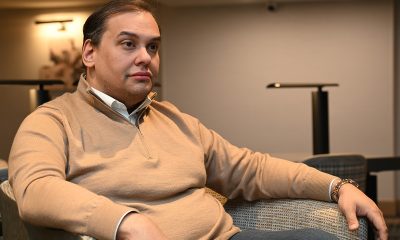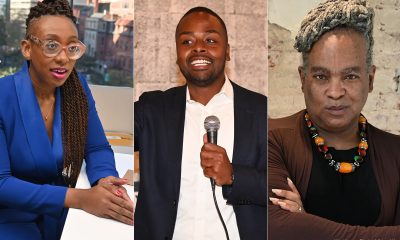Arts & Entertainment
New York City is ready to dazzle visitors again
New York City felt like it was almost its bustling self again.
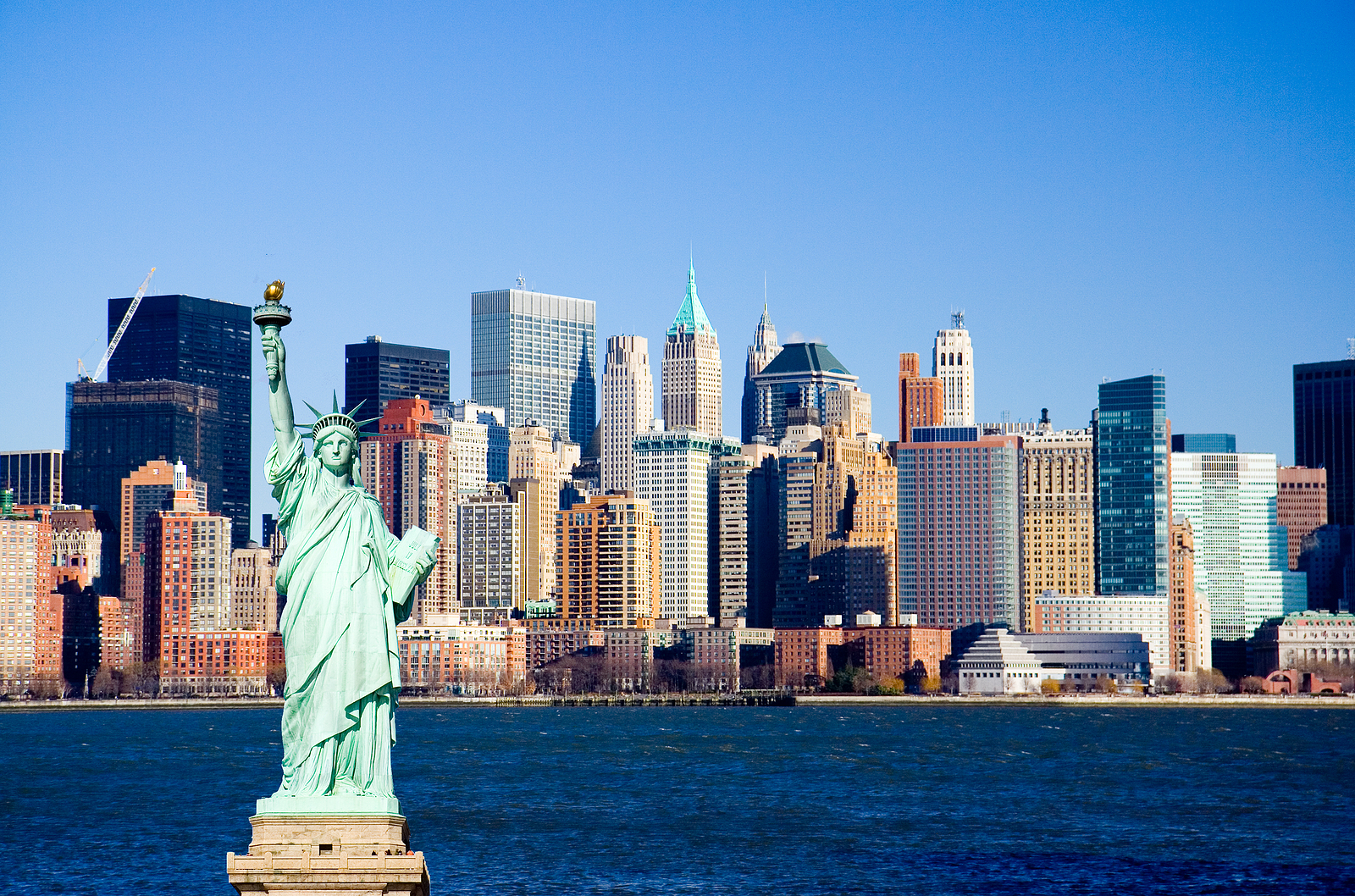
New York City felt like it was almost its bustling self again as I walked through the streets enjoying the warm spring weather during a recent trip.
The city, like many others, is forever changed after more than two years of the COVID pandemic, but in true New York fashion, the Big Apple is coming back. It was my second trip within six months after about a two and a half year break.
New Yorkers rolled up their sleeves (more than 80% are vaccinated), masked up, and have done pretty much everything they can to get their groove back. However, COVID subvariants continue to emerge in the ongoing pandemic. Some venues are still enforcing proof of vaccination and masks. Face coverings are still required on all public transportation until further notice and in Broadway theaters at least until May 31.
Recently, COVID cases have been on the rise in New York due to the new highly contagious Omicron subvariant, BA.2.12.1. People planning to visit should check the city’s visitor site (under Basic Information) for the latest.

Some Broadway shows have canceled performances due to COVID. Other shows are taking place. New restaurants are opening, and reservations are harder to get than ever before. New museum exhibits are opening. Big events are coming back like New York Pride, which returns in-person June 26 with the theme “Unapologetically Us.”
“Our community has been through tremendous hardships over the past few years, beginning with the pandemic, and continuing with a reckoning with social justice, threats to our democracy, and more recently armed conflict overseas,” stated NYC Pride’s new executive director, Sandra Perez, in a March 25 news release. “Compounding these struggles is the onslaught of legislation around the country that directly targets LGBTQIA+ individuals.
“In spite of these challenges and attacks, we are here to tell the country and the world: we will not be erased,” Perez continued, stating that the community will stand together to face the attacks on the LGBTQ community across the country and around the world. “We will continue to love and live our truth and be our full and complete selves – and we are not going to apologize for it.”
NYC Pride board Co-Chair Sue Doster noted the importance of the annual celebration that attracts upward of two million people from across the United States and all over the world.
“We’re thrilled to be able to finally invite everyone back,” she stated.
Tourism officials said the city is rebounding.
“The city is as vibrant as ever,” said Chris Heywood, a gay man who’s executive vice president of global communication of NYC & Company, New York City’s destination marketing and convention and visitors bureau.
The pandemic did not completely stop New York from retrofitting, innovating, and building new hotels, spectacular sites, and opening new restaurants.
“That’s the beauty about New York,” Heywood continued. “Resilience is really our middle name. People are going to encounter a city that is continuing to come back.”
New attractions
Some of the new things to see in New York are Summit One Vanderbilt, the Moynihan Train Hall, and Little Island, the latest park near the Chelsea Piers.
The city’s newest vantage point is at Summit One Vanderbilt. The Summit is a 65,000 square foot space at the top of the 93-story office and residential building at One Vanderbilt adjacent to Grand Central Station.
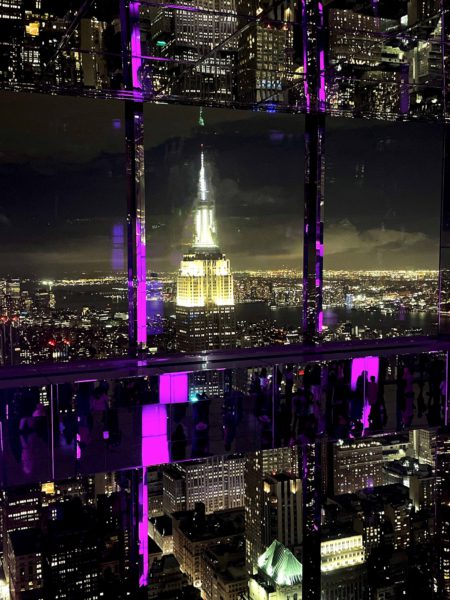
The observatory deck opened in October 2021. It is much more than the highest view (for the moment) of New York City; it’s an experience with a view. Each room is an art installation accentuating the feeling of being high in the sky or in the clouds. At the very top are Apres and the Summit Terrace, where my girlfriend and I enjoyed a cocktail while admiring New York’s sparkling skyline under the night sky.
Tickets to catch the sunset view cost about an extra $16. The Summit does not itemize what the extra amount is at checkout, but it’s for experiencing the Summit at the golden hour, the optimal time of day.
It wouldn’t be New York City without the many opportunities to see art. This spring and summer visitors can catch the 80th edition of the Whitney Museum of American Art’s “Biennial 2022: Quiet As It’s Kept,” which opened April 6. The two-floor exhibit brings together a survey of 63 American artists exploring the darkness and disruption of 2020. The title is a colloquial phrase taken from the late novelist Toni Morrison. The show runs through September 5.
Henri Mattise lovers can take in a rare exhibit of the French artist’s early works that formed modern art at the Museum of Modern Art exhibition “Mattise: The Red Studio,” which opened May 1. The show runs through September 10.
The Brooklyn Museum is featuring “Andy Warhol: Revelation”, showing now through June 19.
Brooklyn Academy of Music is featuring the DanceAfrica Festival, which is celebrating its 45th anniversary through the end of this month.
I rarely leave New York without seeing at least one show on Broadway. Right now, it’s all about the classics and some new musicals (“Wicked,” “Chicago,” and “Funny Girl”) and plays (“Plaza Suite” and “To Kill A Mockingbird”).
Dining and drinking
Food draws my girlfriend and I to New York just as much as Broadway’s musicals. For this trip, I sought out restaurants that were old favorites that survived the pandemic, some that were reborn, and others that were new.
During the day we lunched at the fun, cheeky and very gay diner Cafeteria; a Chelsea neighborhood staple, Elmo; and famed chef and restaurateur David Chang’s Momofuku Noodle Bar.
At night we hit the town enjoying dishes crafted by some of New York’s finest lesbian chefs. Chef and restaurateur duo Rita Sodi and Jody Williams’ beloved Via Carota lived up to the hype. You can’t go wrong with pasta, but this is exceptional pasta. I also dined at the culinary couple’s newest venture The Commerce Inn. It veers away from the chefs’ usual turf, French and Italian cuisine, exploring and modernizing American Shaker dishes that hit the mark.
Lesbian executive chef Hillary Sterling crafted a distinctive Italian menu at Ci Siamo restaurateur Danny Meyer’s latest culinary venture. Lesbian executive chef Mary Attea at the Michelin-rated The Musket Room serves a revisioned world on your plate. There was no doubt that I wouldn’t enjoy chef and restaurateur Mark Strausman’s new restaurant Mark’s Off Madison, which has a warm atmosphere and incredible, flavorful comfort food.
Two unique restaurants that might signal a shift in the queer culinary scene in New York are Tagmo and Hags. Both restaurants are queer-owned and -operated. They actively hire LGBTQ staff and are deeply involved in the community.
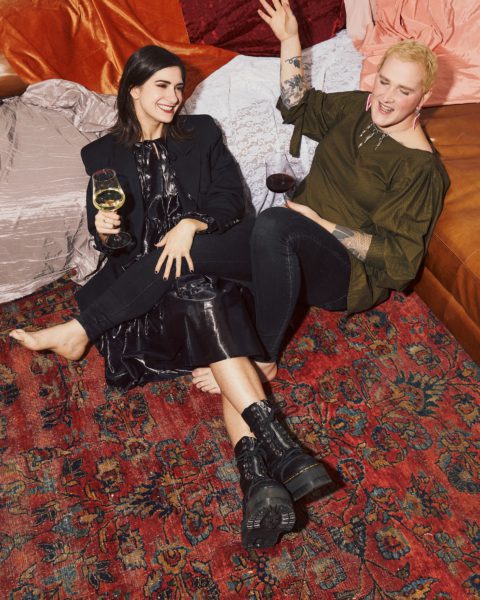
Queer chef Surbhi Sahni is the heart behind Tagmo, an Indian restaurant that opened in Seaport, a small shopping and dining center near One World Trade Center, in September 2021. Tagmo is not your average Indian restaurant. Dining there is a gastronomic adventure through India with all its diverse cuisines.
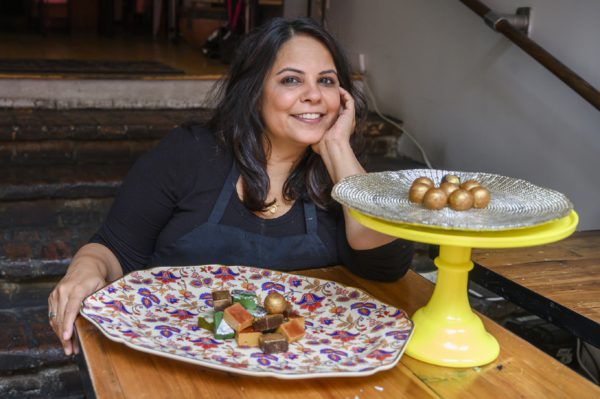
The much-anticipated Hags is targeted to open just ahead of Memorial Day weekend, May 25. The Lower Eastside restaurant aims to be the first upscale queer restaurant, according to business and life partners Telly Justice, a transgender woman, and Camille Lindsley, a queer woman.
New York’s nightlife isn’t quite what it used to be like yet. My girlfriend and I enjoyed early nightcaps at Tiny’s & The Bar Upstairs in Tribeca, the historic Stonewall Inn in Greenwich Village, and Bar Veloce in Chelsea.
Village lesbian bar mainstays – Henrietta Hudson and Cubbyhole – and Brooklyn’s Ginger’s Bar got makeovers during the pandemic and recently reopened. Catch roving lesbian events hosted by Dyke Beer and Dave’s Lesbian Bar on their websites or follow them on social media.
The boys are back in action from Midtown to Harlem with bars and nightclubs for every stripe in the rainbow flag. Check out Midtown’s swanky The Townhouse of New York. Head to the West Village’s Playhouse or get nostalgic at New York’s oldest gay bar Julius’ and the historic Stonewall Inn. Head uptown to Harlem for the last remaining Black-owned gay bar Alibi Lounge.
Where to stay
My girlfriend and I stayed at the Smyth Tribeca. The newly renovated modern 100-room hotel opened in September 2021. The hotel is comfortable, chic, and perfectly located on the corner of Chambers Street and West Broadway above the Westside’s 1 line. The subway line is a direct vein to Broadway, the Village, and many of New York’s most popular destinations.
Getting around
New York’s metro is going touchless with Omny, an app that allows riders to tag on and off the subway and buses with their smartphones and other smart devices. Riders can choose to use the Metro Card or the app to get around the city.
a&e features
Your guide to D.C.’s queer New Year’s Eve parties
Ring in 2026 with drag, leather, Champagne, and more

With Christmas in the rear view mirror, we can turn our attention to ringing in a much-anticipated New Year with a slew of local LGBTQ parties. Here’s what’s on tap.
Pitchers
This spacious Adams Morgan bar is hosting the “Pitchers’ Perfect New Year’s Eve.” There will be a midnight Champagne toast, the ball drop on the big screens, and no cover, all night long. The bar doesn’t close until 4 a.m., and the kitchen will be open late (though not until close). All five floors will be open for the party, and party favors are promised.
Trade
D.C.’s hottest bar/club combo is leaning into the Shark motif with its NYE party, “Feeding Frenzy.” The party is a “glitterati-infused Naughty-cal New Year’s Even in the Shark Tank, where the boats are churning and the sharks are circling.” Trade also boasts no cover charge, with doors opening at 5 p.m. and the aforementioned Shark Tank opening at 9 p.m.. Four DJs will be spread across the two spaces; midnight hostess is played by Vagenesis and the two sea sirens sensuously calling are Anathema and Justin Williams.
Number Nine
While Trade will have two DJs as part of one party, Number Nine will host two separate parties, one on each floor. The first floor is classic Number Nine, a more casual-style event with the countdown on TVs and a Champagne midnight toast. There will be no cover and doors open at 5 p.m. Upstairs will be hosted by Capital Sapphics for its second annual NYE gathering. Tickets (about $50) include a midnight Champagne toast, curated drink menu, sapphic DJ set by Rijak, and tarot readings by Yooji.
Crush
Crush will kick off NYE with a free drag bingo at 8 p.m. for the early birds. Post-bingo, there will be a cover for the rest of the evening, featuring two DJs. The cover ($20 limited pre-sale that includes line skip until 11 p.m.; $25 at the door after 9 p.m.) includes one free N/A or Crush, a Champagne toast, and party favors (“the legal kind”). More details on Eventbrite.
Bunker
This subterranean lair is hosting a NYE party entitled “Frosted & Fur: Aspen After Dark New Year’s Eve Celebration.” Arriety from Rupaul Season 15 is set to host, with International DJ Alex Lo. Doors open at 9 p.m. and close at 3 p.m.; there is a midnight Champagne toast. Cover is $25, plus an optional $99 all-you-can-drink package.
District Eagle
This leather-focused bar is hosting “Bulge” for its NYE party. Each District Eagle floor will have its own music and vibe. Doors run from 7 p.m.-3 a.m. and cover is $15. There will be a Champagne toast at midnight, as well as drink specials during the event.
Kiki, Shakiki
Kiki and its new sister bar program Shakiki (in the old Shakers space) will have the same type of party on New Year’s Eve. Both bars open their doors at 5 p.m. and stay open until closing time. Both will offer a Champagne toast at midnight. At Kiki, DJ Vodkatrina will play; at Shakiki, it’ll be DJ Alex Love. Kiki keeps the party going on New Year’s Day, opening at 2 p.m., to celebrate Kiki’s fourth anniversary. There will be a drag show at 6 p.m. and an early 2000s dance party 4-8 p.m.
Spark
This bar and its new menu of alcoholic and twin N/A drinks will host a NYE party with music by DJ Emerald Fox. Given this menu, there will be a complimentary toast at midnight, guests can choose either sparkling wine with or without alcohol. No cover, but Spark is also offering optional wristbands at the door for $35 open bar 11 p.m.-1 a.m. (mid-shelf liquor & all NA drinks).
Movies
Long-awaited ‘Pillion’ surpasses the sexy buzz
A film to admire from a promising new queer director
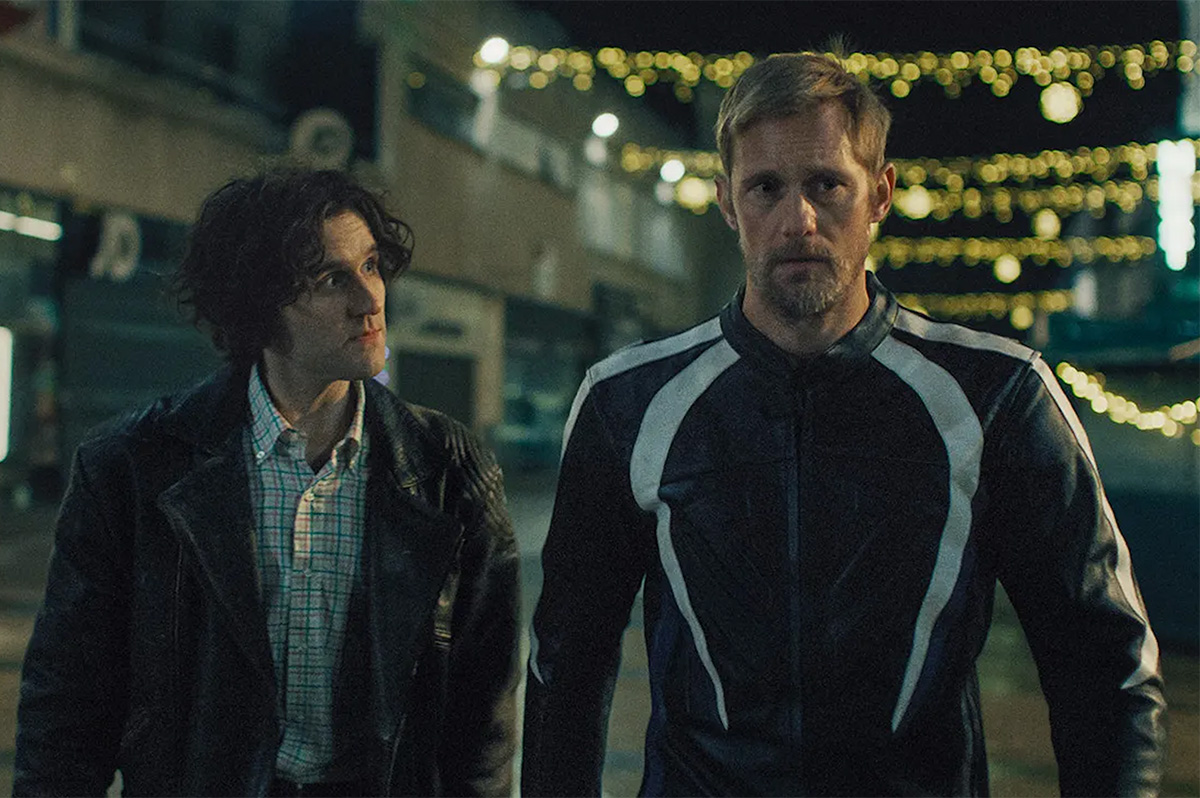
In case you didn’t know, “Pillion” – the title of debut UK filmmaker Harry Lighton’s buzzy gay “fetish rom-com” starring Scandinavian hunk Alexander Skarsgård and “Harry Potter” alumnus Harry Melling – refers to a rear seat on a motorcycle for a passenger, and the person who occupies it is said to be “riding pillion.”
That definition might be useful going into the movie’s story of an introverted gay Londoner who becomes involved with a handsome but icy biker and is introduced to the subculture of Dom/sub relationships, in that it evokes a dynamic that might be said to reflect the one that exists between its two main characters. There is nothing about Lighton’s disarmingly humorous and surprisingly sweet film, however, that seems to imply an interest in offering pat explanations or easy value judgments about the lifestyle it explores, so to think its title is meant as some kind of summation would be a mistake.
It centers on Colin (Melling), a timid parking warden who still lives with his mom and dad (Lesley Sharp and Douglas Hodge) and sings with a barbershop quartet as a hobby. After a gig singing Christmas carols at a gay bar, he catches the eye of sleekly confident Ray (Skarsgård), who gives him his phone number after a brief and thrillingly intimidating interaction. Prompted by his parents, he decides to call, leading to a steamy hookup in a back alley – and eventually, a live-in BDSM situation in which he becomes Ray’s official “sub,” catering to his every need and becoming a member of the gay biker community to which he belongs. It’s all perfectly fine with Colin, who embraces his role with pleasure; but when he begins to long for a deeper connection with the enigmatic and emotionally distant Ray, it triggers a disruption in the dynamic of their relationship, putting it to a test it may not be able to pass.
“Pillion” was already creating a stir before its prize-winning debut at the Cannes Film Festival last May, largely thanks to the highly publicized casting of Skarsgård as the leather-clad leading man in a gay BDSM romance. But near-universal critical acclaim quickly validated the buzz, turning it into one of 2025’s most anticipated movie releases – particularly, of course, for gay audiences, and especially for those who are part of the BDSM community and rarely get the opportunity to be “seen” on the screen as anything other than a lazy stereotype.
Naturally, much of that buzz has been driven by a prurient fervor, fueled by the promise of kinky onscreen sex and rumors of a notorious close-up highlighting the full-frontal assets of a certain Swedish movie star. One of the things that’s remarkable about “Pillion,” however, is that while it certainly doesn’t downplay the overt sexual aspect of the relationship at its center, it doesn’t use them to titillate or shock us. Its plentiful scenes of intimacy are sexy, yes, but they also chart the development of the characters’ bond together, expressing feelings that can only be left unspoken within their agreed-on dynamic. They advance both the story and our awareness of the characters’ psychology, and while they may occasionally provide a jolt for viewers not accustomed to seeing gay fetish sex portrayed explicitly on screen, they successfully capture the joy of the experience instead of making it feel sensationalized or lurid.
In fact, once “Pillion” ends, it’s not the sex (not exclusively, at least) that lingers in our mind; it’s the delicate balance it maintains between tension and ease, detachment and tenderness, rigidity and flow – mirroring the surging passions contained within the strictly regimented order of their power dynamic. It’s the depth of Melling’s film-anchoring performance, in which he undergoes an entire voyage of discovery that emphasizes Colin’s strength, not his timidity, and allows us to relate to him in ways that may surprise us. It’s the authenticity of the relationships between all the characters, from Sharp and Hodge’s doting parents to Scissor Sisters front man Jake Shears (in his film acting debut) as a fellow sub who ignites a spark of jealousy between Colin and Ray; most of all, it’s the way that it allows the story to move, with a slow and methodical rhythm – reflected in the measured strains of Eric Satie’s “Gymnopode No.1” that echo through Oliver Coates’ evocative score – that makes it all feel perfectly natural.
And yes, it’s also the presence of Skarsgård, who subtly (and with wry humor) contrasts tight-lipped alpha stoicism with his flawless male beauty that feels like a force of nature. We don’t know much about Ray, ever, through the dialogue in Lighton’s tersely worded screenplay, but we can draw our own conclusions from the eloquent silence that Skarsgård wraps around the character like a security blanket. Best of all, he never uses his “Dom” role in the film to overshadow Melling – it’s Colin’s story, after all, and Skarsgård’s Ray deploys a tactic of “quiet command” on him throughout without ever stealing his spotlight.
As for the film’s writer/director, Lighton manages perhaps the most delicate balancing act of all. He takes a story (adapted from a novel by Adam Mars-Jones) about someone discovering himself in the BDSM community, who engages in sexual behavior that’s likely out of the comfort zone of many viewers and enters a “romantic” partnership most people would find unacceptable, and turns it into a movie that is all about the complexities of human experience. You may not know much (or want to) about life as a sub in a BDSM partnership, but you know what it feels like to love someone, and to long for love in return; Lighton understands that “Pillion” is a story about that, and he knows how to tell it so that you will understand it, too.
That said, it’s obvious there will be many audiences out there for whom a movie about leather-clad queer fetish sex might simply be a step too far for them to take. Anyone approaching “Pillion” should be aware that, depending on your own level of familiarity – or comfort – with the BDSM lifestyle, your reaction may vary across a spectrum of perspectives; if you’ve been around it, nothing the movie shows you is likely to ruffle your feathers, and if you haven’t, well, only you know your limits.
For us, it’s a film to admire from a promising new queer director, shining a light on an insular culture within the larger rainbow community with intelligence, dignity, and a refreshing lack of the homophobic tropes that so often haunt queer movies, even when they are made by queer filmmakers themselves.
Unfortunately for Americans, while “Pillion” was released in the UK on Nov. 28, we won’t get a chance to see it until Feb. 6. With the buzz now even stronger and the stars in full “promotional” mode on the talk show circuit, we thought it would be a good idea to let you know that the wait might still be a while, but it will be worth it.
After all, as any good Dom can tell you, a pleasure withheld tastes even sweeter when it’s finally given.
Books
‘Dogs of Venice’ looks at love lost and rediscovered
A solo holiday trip to Italy takes unexpected turn

‘The Dogs of Venice’
By Steven Crowley
c.2025, G.P. Putnam & Sons
$20/65 pages
One person.
Two, 12, 20, you can still feel alone in a crowded room if it’s a place you don’t want to be. People say, though, that that’s no way to do the holidays; you’re supposed to Make Merry, even when your heart’s not in it. You’re supposed to feel happy, no matter what – even when, as in “The Dogs of Venice” by Steven Rowley, the Christmas tinsel seems tarnished.

Right up until the plane door closed, Paul held hope that Darren would decide to come on the vacation they’d planned for and saved for, for months.
Alas, Darren was a no-show, which was not really a surprise. Three weeks before the departure, he’d announced that their marriage wasn’t working for him anymore, and that he wanted a divorce. Paul had said he was going on the vacation anyhow. Why waste a perfectly good flight, or an already-booked B&B? He was going to Venice.
Darren just rolled his eyes.
Was that a metaphor for their entire marriage? Darren had always accused Paul of wanting too much. He indicated now that he felt stifled. Still, Darren’s unhappiness hit Paul broadside and so there was Paul, alone in a romantic Italian city, fighting with an espresso machine in a loft owned by someone who looked like a frozen-food spokeswoman.
He couldn’t speak or understand Italian very well. He didn’t know his way around, and he got lost often. But he felt anchored by a dog.
The dog – he liked to call it his dog – was a random stray, like so many others wandering around Venice unleashed, but this dog’s confidence and insouciant manner inspired Paul. If a dog could be like that, well, why couldn’t he?
He knew he wasn’t unlovable but solo holidays stunk and he hated his situation. Maybe the dog had a lesson to teach him: could you live a wonderful life without someone to watch out for, pet, and care for you?
Pick up “The Dogs of Venice,” and you might think to yourself that it won’t take long to read. At under 100 pages, you’d be right – which just gives you time to turn around and read it again. Because you’ll want to.
In the same way that you poke your tongue at a sore tooth, author Steven Rowley makes you want to remember what it’s like to be the victim of a dead romance. You can do it here safely because you simply know that Paul is too nice for it to last too long. No spoilers, though, except to say that this novel is about love – gone, resurrected, misdirected – and it unfolds in exactly the way you hope it will. All in a neat evening’s worth of reading. Perfect.
One thing to note: the Christmas setting is incidental and could just as well be any season, which means that this book is timely, no matter when you want it. So grab “The Dogs of Venice,” enjoy it twice with your book group, with your love, or read it alone.
The Blade may receive commissions from qualifying purchases made via this post.
-

 District of Columbia3 days ago
District of Columbia3 days agoReasons to be optimistic about 2026
-

 Commentary5 days ago
Commentary5 days agoAmerica is going in the wrong direction for intersex children
-

 Movies3 days ago
Movies3 days agoLong-awaited ‘Pillion’ surpasses the sexy buzz
-

 Commentary4 days ago
Commentary4 days agoProtecting the trans community is not optional for elected allies and candidates





